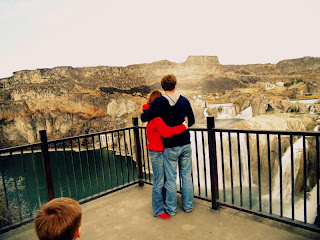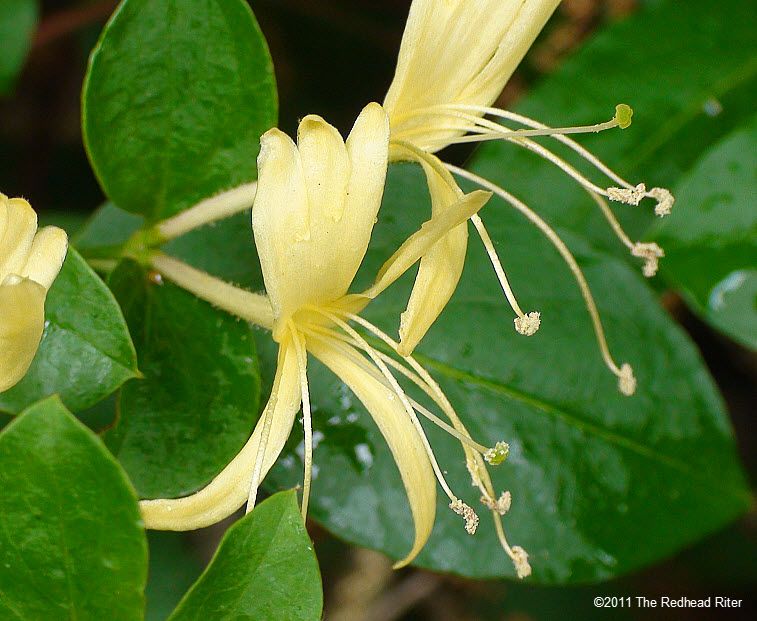| Addison's Walk |
Hello again everyone! So currently I'm in Oxford which has been a blast and a personal check mark on my bucket list. I love J.R.R. Tolkien and C.S. Lewis though I'd have to admit that I'm more of a Lewis buff and my little brother Tanner the Tolkien buff. Yesterday our Oxford tour was conducted by "Dashing Fred" (his real name is obviously just Fred but the nickname is very deserved). It's lucky that he was so energized and fun because the two hour tour was conducted almost entirely in the rain. But it was lovely.
We got to see the door and lamp post that inspired C.S. Lewis' The Lion, the Witch, and the Wardrobe. That is probably what I would designate my most intense nerd moment of the day. We also stopped by Magdalen College where both Lewis and Tolkien taught. Today we actually went back and walked Addison's Walk where J.R.R. Tolkien and Hugo Dyson discussed the truth behind myths, eventually leading to the conversion of C.S. Lewis, an adamant atheist, to Christianity. As many may know, C.S. Lewis is one of the most influential, modern critic, writer, and essayist of Christianity. And it all began with a friendship between Tolkien and Lewis. So here are some pictures!
| The Lamp Post! |
| The Door is carved with the lion that became Aslan and the gold figures are what on the side posts are what became Mr. Tumnus |
| The Garden Passage in Nash's Home |
| The Gardens in Elizabeth Nash's Home |
| Anne Hathaway's Cottage |
Before Oxford I spent a couple of days in Stratford upon Avon where we saw the Royal Shakespeare Company put on Hamlet, Titus Andronicus, and As You Like It. I didn't personally go to Titus Andronicus because of my weak stomach and all-to-good memory. We also took numerous tours through the homes of Shakespeare's daughter Suzanne, granddaughter Elizabeth, his father John, his mother's childhood farm, and his wife's cottage. The garden's were probably my favorite part of the homes, even though both were fantastic.
| Yay for Harry Potter Butterbeer! |
Also there was a place in Stratford called Magic Alley and we got to try butterbeer there! It was really yummy but so so so sweet. Kind of a citrus and ginger lemonade with foam, it was delicious.
| The reed covering the leads to the woods |
| The woods next to Anne Hathaway's Cottage |
Okay so I'm currently in the middle of my newest essay on the connections between mortality, pain, and nature. They all seem like random topics in relation to each other but I promise it will all come together. This is actually going to be one of my longer essays so I'm going to post it in installments. Here are the first two sections! Enjoy.
The Mortal Moment
Trekking Through the Pilgrimage of Existence
 |
| Ophelia in RSC 2013 production of Hamlet |
Recognizing My Own Mortality
Ophelia was lying dead on the stage. Man, she was so dead. Somewhere in my mind I’d created a strange division between those who were simply no longer moving and those who could never rise again. Though seemingly the same, as dead is dead, one seemed passively fading away, while the other symbolized the struggle to live and the stark contrast of being forbidden from life. Ophelia, still dressed in her wet wedding dress was bone white with a blank, startled stare, slender in her now ebbing beauty, and frightening as her energetic spirit was now stilled to silent dust. As I stared at her I grew more and more uncomfortable, willing her to move, wishing her to move. She never again did move. For the first moment in the 20 years of my existence I understood the state of my own mortality and the finality of death was stunning.
| Sitting in a room amongst the ruins of Fountain Abbey |
| The Garlic Bridge off the trail near Fountain Abbey (the entire bridge path is a garden of wild garlic plants) |
| W.G. Sebald |
Shortly before coming to Stratford upon Avon we traced the footsteps of a the author W.G. Sebald and the twenty miles that inspired his book, The Rings of Saturn. W.G. Sebald understood well the reality of mortality, loneliness, the passage of time, and the connecting thread we may find in nature. growing up in Germany, Sebald was acquainted with accounts, photos, and thoughts of the Holocaust from an early age, leaving him undeniably altered. For some time his father was also absent, being a prisoner of war in World War II, during which time Sebald's closest male figure was his Grandfather. These occurrences teaching him of the fragility of men, the loss and absence of loved ones, and the age of those closest to him color much of his work, perhaps serving as his moment when he first faced his own mortality.
| Standing on the shoreline near Suffolk |
The night before The Rings of Saturn hike we watched a film called Patience, gaining greater access to the mind of of W.G. Sebald and his turn towards nature, in preparation for our own turn towards nature. Now more than ever I wanted to find the inspiration within nature that the melancholy voices on the screen seemed to find so prominently no matter where they looked. I thought that if I could walk an "inspiring" enough place, or somewhere that particularly spoke to me then I would be able to tap into the message, then nature would show me its ability to inspire. I think I got it wrong. I've totally misunderstood the meaning of turning towards nature. As I walked the shoreline of the Germanic Sea, walking the twelve miles towards Suffolk had great capacity to be either monotonous or inspiring. I never thought to decided which. I simply assumed that each piece of nature had been designated one or the other, and I waited to discover which this spot would prove to be. The moment I changed my mind was subtle. It came to me while I was writing a letter to my fiance. I was listening to Patience and thinking of the words he'd written to me in an email. I had asked him to give me his opinion on the essays I had been writing, including my essay that claimed the inability of nature to inspire as I mentioned earlier. This is what he said:
| The Woods near Anne Hathaway's Cottage (Stratford upon Avon) |
But that is just how I feel. And think. :)
I love you darling. I have to hurry to work. Be safe. Do great things."
As I thought about these words this phrase stood out to me in particular, "And I think that nature's best inspiration is being a type for truth. Because what else is mankind seeking to illuminate?...We seek truth and nature gives us a means by which to realize it...
Do great things."
| Walking in Magdalen College's Addison's Walk (Oxford University; where Tolkien converted C.S. Lewis) |
Do great things? What could I do? A type for truth? What truth? Each of these questions coursed through my mind as I stared down at a fresh page in what would become a letter to Spencer. I was incredibly focused on my calligraphy, hoping that some response to these questions would suddenly manifest itself to me as I pressed harder and harder on the tip of my pen. Before me haunting voices emanated from the screen, praising nature and Sebald's ability to tap into nature...wait! Sebald's ability...Sebald's ability, not nature's ability. And suddenly I understood. It was not for me to receive but rather to discover. It was me.
I’d been waiting for something in the Landscape to prove it’s worth to me. I seemed to have been waiting for some hidden cache of coded thoughts to make themselves known to me, and further to impress upon my mind, which perceived a vast expanse of loaded nothingness, the form of words. This, would have placed me as some heroic idealist who had dug out the existential secrets of the abstract formations we term nature, yet continually rely on as a concrete connection between our individual reality and communal identity. But this was not my role, to reap success off of the endurance of nature, forever waiting for the landscape to adapt its wild language to the simplistic notation of the words in my mind. I needed to instead mold my mind to the procession of signals which emitted in a wild and unknown time table. It is not Nature’s innate responsibility to inspire but rather to exist. It is the setting not the interpreter, and it is for me to graft myself in and take part of a mode of existing in which the perfection of the cycle is found. What is Truth but the pilgrimage of existence? The way in which we triumph or endure the catastrophe of eroding time while enjoying the desolation and eventual re-growth of sweet tranquility.
This is what may be found in Nature, the renewal which inspires in ways other than words.
And that is what I wrote to Spencer. In one moment I learned that a twelve mile hike along the Germanic Coast could be whatever I made it and anything I chose to find.
-Natalie Cherie
Next Installment Coming Shortly . . .


